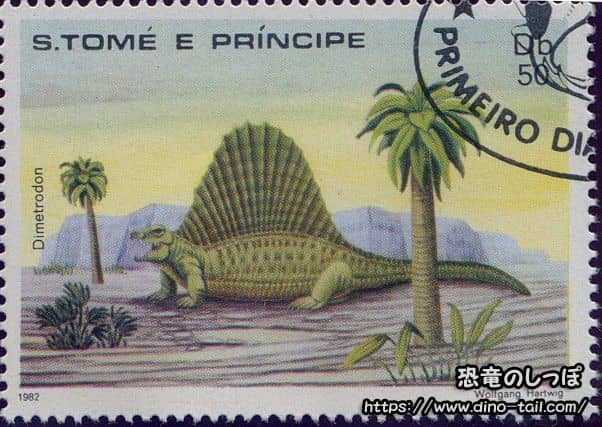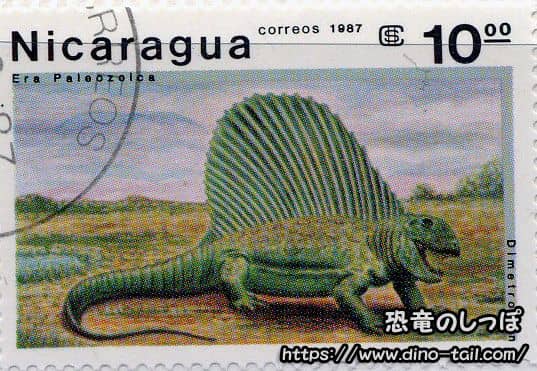About Dimetrodon
| Scientific Name (Genus) | Dimetrodon |
| Meaning of Name | Two measures of teeth |
| Classification | Synapsida, Pelycosauria, Sphenacodontidae |
| Total Length | 1.7 - 3.5m |
| Diet | Carnivorous |
| Period | Early Permian |
| Sub-classification / Species Name |
Dimetrodon angelensis
Dimetrodon booneorum Dimetrodon giganhomogenes Dimetrodon grandis Dimetrodon limbatus Dimetrodon loomisi Dimetrodon macrospondylus Dimetrodon milleri Dimetrodon natalis Dimetrodon occidentalis Dimetrodon teutonis |
| Year of Paper Publication | 1878 |
| Genus Name Publication |
Descriptions of extinct Batrachia and Reptilia from the Permian formation of Texas.
Proceedings of the American Philosophical Society. 17. by Cope, E.D. 1878. |
Features
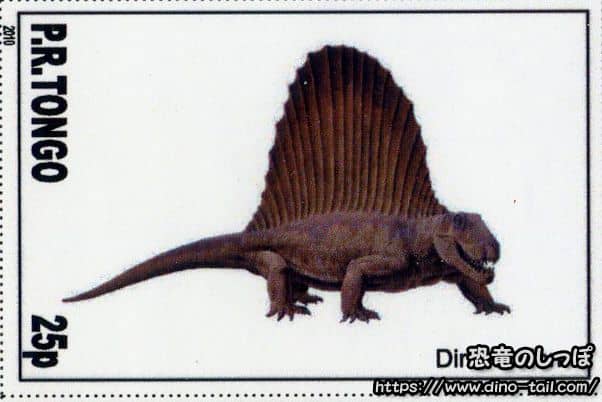
The function of Dimetrodon's most distinctive feature, the sail on its back, has been debated for many years, with two main prevailing theories:
- Thermoregulation Theory: The traditional theory suggests that it functioned as a radiator, warming the body by circulating blood through the sail in the sun, or cooling it by exposing it to the wind. This may have allowed them, as ectotherms, to become active earlier than other creatures.
- Display Theory: In recent years, the idea that it was used as a "billboard" for identifying mates, courting females, or intimidating rivals has become more prominent. The fact that the size and shape of the sail differ between species supports this theory.
In reality, it may have served both of these roles.
Fossils have been found in North America and Europe.
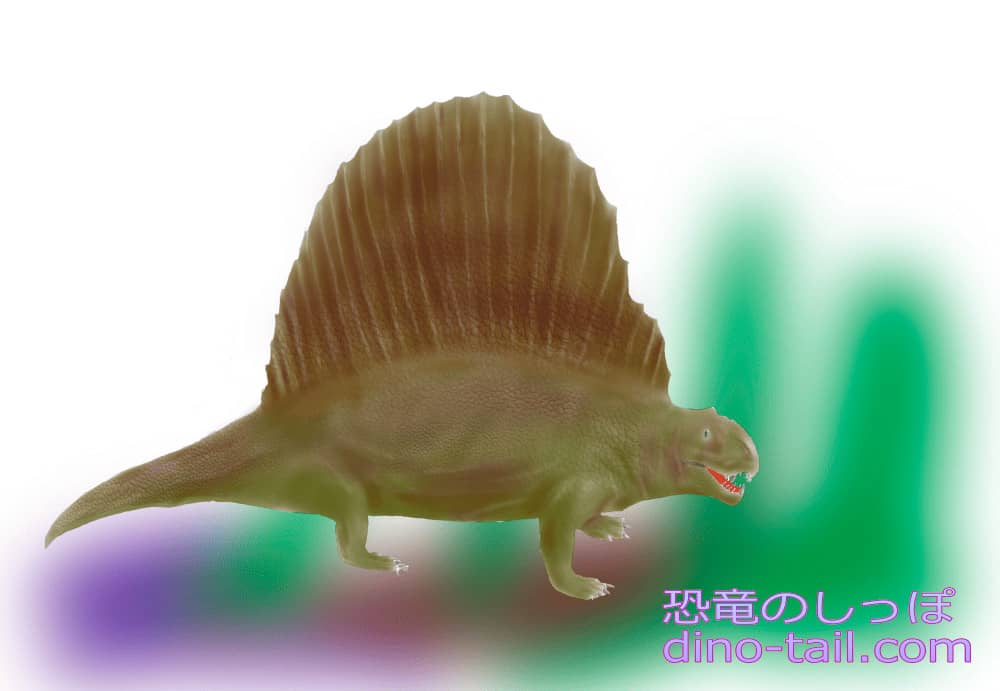
Not a Dinosaur! A Distant Ancestor of Mammals
Dimetrodon is a regular in dinosaur books, but it is actually not a dinosaur. They went extinct about 40 million years before the first dinosaurs appeared on Earth.
Dimetrodon belongs to a group called " Synapsida ." This group is the lineage that would later evolve into mammals, and it branched off from the "Diapsida," which includes crocodiles, lizards, and dinosaurs, at a very early stage in the tree of life. In other words, Dimetrodon is a much closer relative to mammals, including us humans , than to Tyrannosaurus or Triceratops.
Dimetrodon's Two Types of Teeth
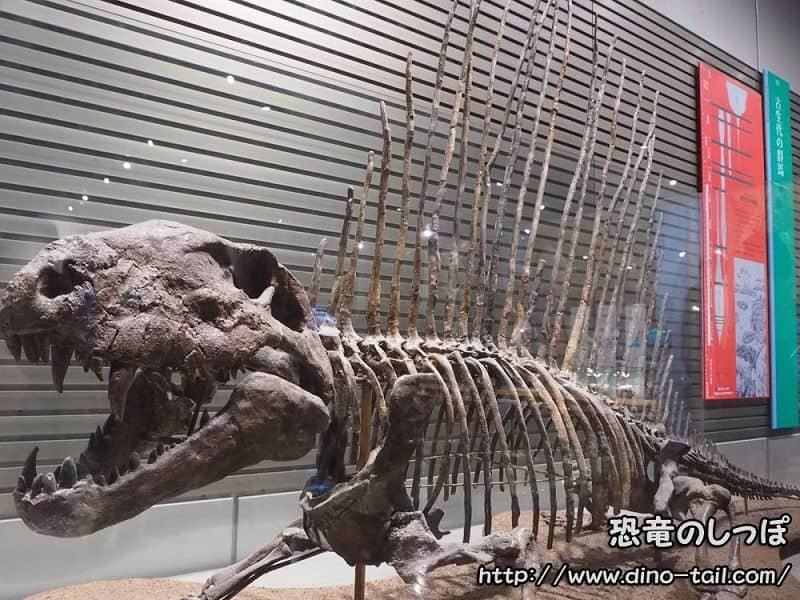
From Oklahoma, USA
The genus name Dimetrodon means "two measures of teeth" in Latin.
As its name suggests, Dimetrodon had heterodonty, allowing it to prey efficiently with two types of teeth.
It possessed features seen in modern carnivores—canine teeth for stabbing and other teeth for tearing flesh. This trait was passed down to later mammals.
Thanks to these powerful teeth and the sail that allowed it to warm up quickly, Dimetrodon reigned as the apex predator of the Early Permian ecosystem. It is thought to have preyed on amphibians of the time and other synapsids like Edaphosaurus.
Early Research
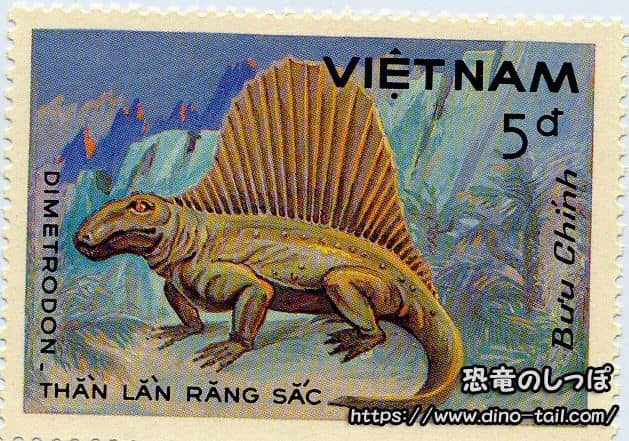
Dimetrodon was studied by the American paleontologist Edward Drinker Cope in the 1870s.
He collected fossils of quadrupedal vertebrates from the Red Beds formation in Texas from several fossil collectors, including Jacob Boll of Switzerland, Texas geologist W.F. Cummins, and amateur fossil collector Charles Hazelius Sternberg, and began his research after transferring the specimens to the American Museum of Natural History and the Walker Museum.
In 1878, Edward Cope described the genus Dimetrodon, which lived in the Permian period. Three sub-classifications were reported:
"Dimetrodon incisivus," "Dimetrodon rectiformis," and "Dimetrodon gigas."
It was later discovered (in 1940) that another genus, Clepsydrops, described by Edward Cope in 1877, was actually a species of Dimetrodon, "D. limbatus."
Dimetrodon Stamp and Fossil Gallery
